Birds are among the most intelligent and talkative animals in the entire world. Their babbling, chatty, and loose-lipped mimicry have inspired various stories, both humorous and dark, from across all human cultures. True mimicry is a rare phenomenon. However, it is largely restricted to parrots and only a few songbirds. This makes parrots ideal test subjects to study the evolvement of speech in birds that can talk.
Scientists have found that parrots can recognize abstract patterns in ways that most songbirds and other types of birds cannot. Both parrots and songbirds may share a similar core song system in the brain, but parrots then evolved deeper vocal learning abilities (there are some exceptions, of course; a few songbirds like starlings and magpies can also mimic speech).
There are many theories for why vocal mimicry and speech evolved in birds. It may have something to do with flock recognition in complex bird societies. The ability to develop a local dialect can help birds distinguish friends from strangers. Another possibility is that some birds can fool predators by mimicking the sounds of more dangerous animals.
Just like any human, however, birds are only as good as their practice (or training). To master the art of vocalization, they must work almost daily with a handler, starting with simple words and repeating them consistently and often. It also helps when the bird can associate its speech with an action or object it enjoys.
Another important thing to keep in mind is that some species are much more natural at it than others. Some birds can only mimic a few words, while others can convey whole sentences. This list will include the top 10 most talented talking birds in the entire animal kingdom. Not all of these birds make good pets, but most do.
African Grey
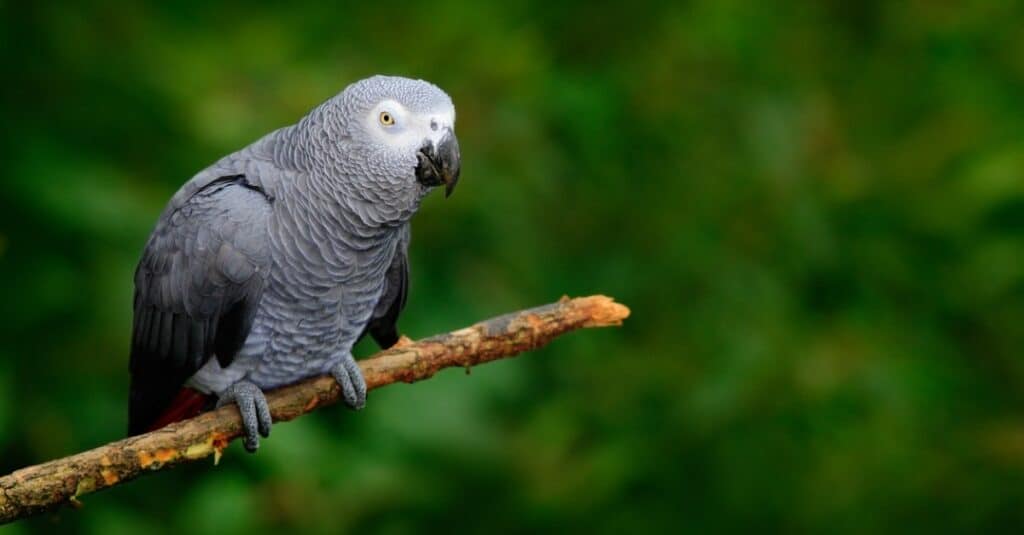
©iStock.com/Ondrej Prosicky
A native of equatorial Africa (a region that stretches between the Ivory Coast in the west and Kenya in the east), the grey parrot, as it’s formally called, is widely regarded as one of the best-talking birds in the entire world. With their very sweet and pleasant voices, they can amass a vocabulary of more than a hundred words (and perhaps, in some cases, more than a thousand), sometimes even combining existing words to describe a new object. Some studies have compared their cognitive ability as equivalent, at least in some respects, to the mind of a four to a six-year-old human child.
Whereas many parrots sport all manner of bright colors, this species is covered in various shades of gray feathers, combined with white edges on the head and body and red feathers on the tail. They are some of the most popular birds in the exotic pet trade, but the IUCN currently considers them to be endangered in the wild because of poaching and habitat loss.
Budgerigar
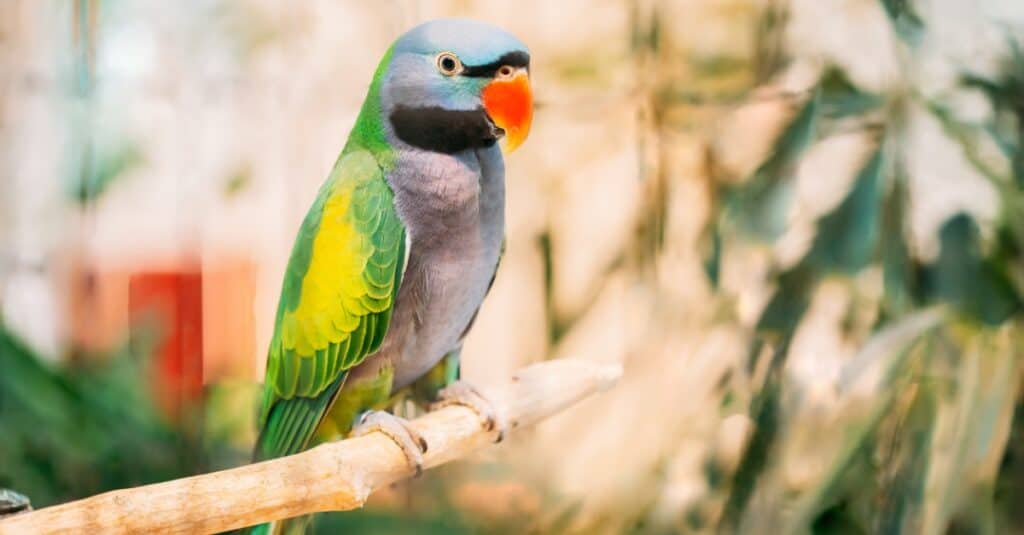
©Grisha Bruev/Shutterstock.com
Also known as the common parakeet, shell parakeet, or just budgie for short, this seed-eating Australian native is a member of the parrot family. The budgerigar is swathed in yellow, blue, green, and white feathers with black markings along the back, nape, and wings. Judging by sheer verbal competency, this bird that can talk probably ranks right at the top of the bird class.
Parakeets and parrots want to fit in with the flock to be able to survive in the wild because the flock will help them ward off predators while finding food. This is why they learn to talk so quickly. If they are only around each other the first year of life, they will imitate one another. However, if they are the new member of a human family, parakeets will try to fit in with that “flock” too, which is why they will begin to mimic.
A budgerigar named Puck once set a world record for the largest bird vocabulary at some 1,728 words, but even an average member of this species can learn hundreds of words and speak them with consistency and clarity. It is no shame to mistake their mimicry for the speech of an actual person. They are also highly social animals and enjoy practicing words with their owner. This proficiency has made them quite famous. One of these birds appeared on “The Tonight Show” with Johnny Carson.
Amazon Parrot

©Ben Schonewille/Shutterstock.com
Found throughout most of South and Central America, the Amazon parrot is a group of birds, comprised of 30 distinct species, all of them swathed in green or red feathers. Most Amazon parrots are quite proficient in speech. The key to their vocalizations could be their highly social nature. These are gregarious birds that gather together in large flocks for foraging, roosting, and nesting.
Evidence suggests that these parrots have a long history of beguiling people with their vocal talents. Mummified parrots have been found dating back centuries, before the arrival of Europeans. While poaching is now banned in many countries, they continue to be traded and used as pets. They’re so popular that many birds have escaped from captivity and established feral flocks throughout the world.
Rose-ringed Parakeet

©Randy Bjorklund/Shutterstock.com
Also known as the ring-necked parakeet, these medium-sized birds, identifiable by the light green plumage, orange beak, and rose ring around the neck, are very common throughout India and parts of Africa. While other birds are very sensitive to urbanization and deforestation, the rose-ringed parakeet has seemingly adapted quite well to living near people and learned to mimic human speech. In terms of their verbal proficiency, they are supposed to be very good at recalling longer phrases. One story claims that these birds would hang out near gardens and learn how to mimic the daily prayers of Indian religious leaders. It’s thought that they can learn up to a few hundred words at a time.
Quaker Parrot

©Foto 4440/Shutterstock.com
Also known as the monk parakeet, this small bright green bird with a grayish breast is native to Argentina and the surrounding countries of South America. While not the most capable talkers, they are highly social, intelligent, and quick to grasp human vocabulary, which makes them popular among novice or inexperienced bird owners. Because they can sometimes escape into the wild and become agricultural pests, many states and countries have banned the sale and ownership of this species. Depending on where you live, ownership might be out of the question.
Eclectus Parrot
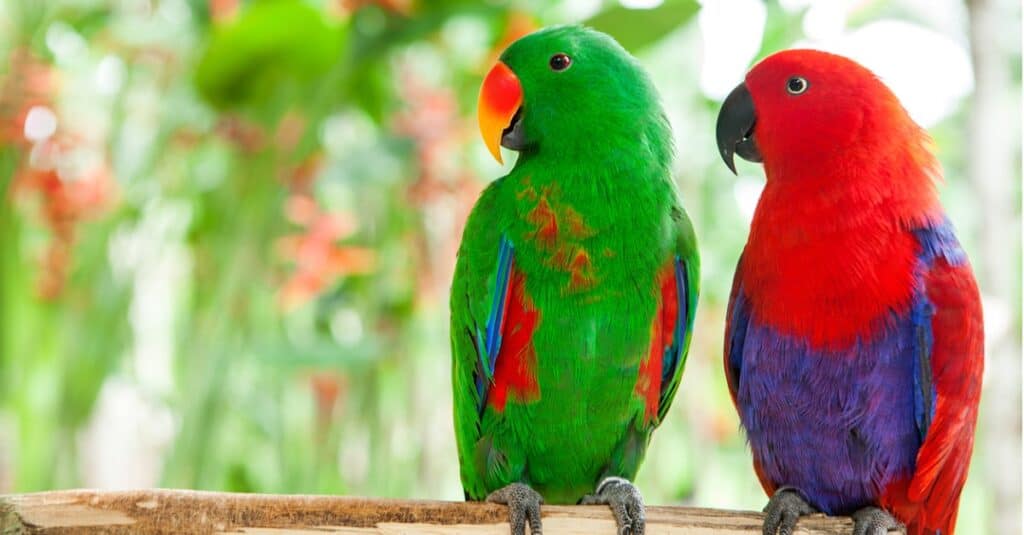
©iStock.com/redchanka
A native of Australia and New Guinea, this species features one of the most interesting and radical cases of sexual dimorphism in the entire bird world. The males have bright green plumage with red and orange mixed in, while the females are bright red with some blue feathers. They’re sometimes mistaken for different species entirely. While fairly laid back, calm, and not too noisy, they do make screeches and whistles in the wild to communicate with each other. In captivity, they can learn a fairly extensive vocabulary of perhaps more than a hundred words.
Hill Myna
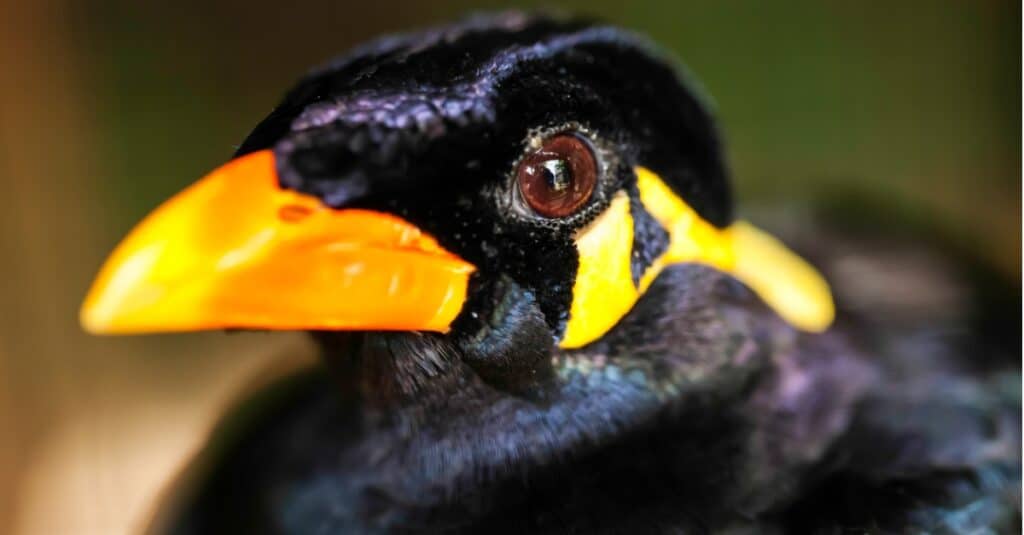
©iStock.com/nattanan726
Most people have probably never heard of the hill myna, much less known about their amazing ability to mimic human speech. A member of the starling family, this group of black-colored songbirds is native to southern Asia (though also later introduced into Florida). In the wild, they make a variety of different shrieks and whistles to communicate with each other. Younger birds appear to learn warning calls from older birds by mimicking their sounds. When placed in captivity, the common hill myna can mimic speech, as well as other sounds, with enough clarity to match the tone of a human voice. Some people claim they can even rival the African gray in sheer speech ability.
Cockatoo
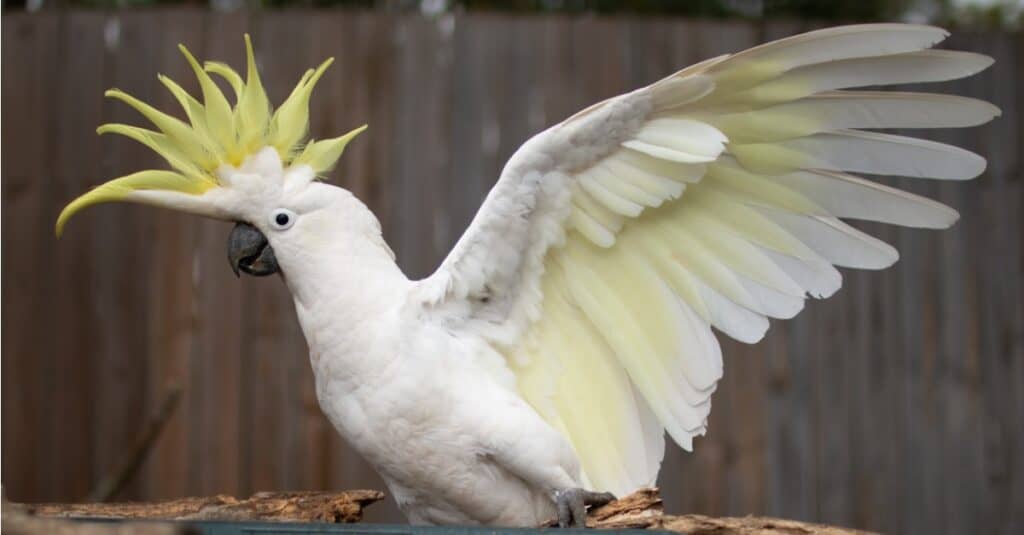
©QuickStartProjects/Shutterstock.com
Common throughout the Asian Pacific region, the cockatoo family is represented by some 44 species, all of them adept at vocal mimicry to some degree. They are identifiable by their fairly large size, their prominent crests, and their curved bills. Their plumage tends to be fairly plain: white, gray, and black, sometimes accentuated with red and yellow, are common colors. Cockatoos are not quite as prized as other talking birds, at least for vocal ability. Their vocabulary is limited to only about 20 to 30 words, and their voice is considered to be loud and harsh. Nevertheless, they can still dazzle and fascinate people with their mimicry. They’re also very curious and sociable birds.
Macaw

©iStock.com/PrinPrince
This large group of colorful, garish, and beautiful New World parrots includes 19 different macaw species. They are often identified by their huge, hooked beaks, exceptionally long tail feathers, and relatively bare facial patches. Their loud noises are an integral part of their personality. The blue and yellow macaw is especially known for its vocal talents — it can learn around 20 words — but all of them can mimic speech to various degrees. Their speech tends to sound a little harsh and unclear, however.
Ravens (and other Corvids)
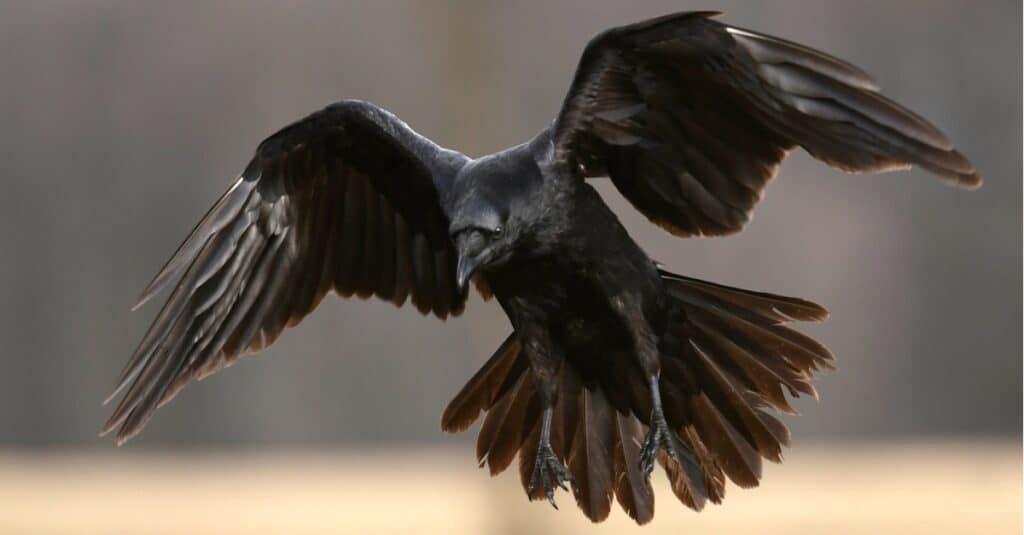
©iStock.com/Piotr Krzeslak
Immortalized by Edgar Allen Poe’s famous poem, ravens (along with closely related crows, rooks, and magpies) can mimic many sounds, including human speech. They put this ability to good use by pretending to be other species. Zookeeper Gerald Durrell once saw a magpie amuse itself by continuously tricking a group of chickens to come out with a feeding call. Thanks to their large brain, in relation to body size, their cognition and problem-solving ability are also unparalleled in the bird world. Corvids are one of the few animals on the planet that regularly use tools to obtain food.
Summary of 10 Birds That Can Talk
| 1 | African Grey |
| 2 | Budgerigar |
| 3 | Amazon Parrot |
| 4 | Rose-ringed Parrot |
| 5 | Quacker Parrot |
| 6 | Electus Parrot |
| 7 | Hill Myna |
| 8 | Cockatoo |
| 9 | Macaw |
| 10 | Raven |
Up Next…
You know these birds can talk, but what else can they do?
- Amazon Parrot Find out about this large, beautiful, intelligent bird.
- 10 Incredible Parakeet Facts If you’re looking for your first pet bird, check out the popular parakeet!
- 10 Incredible Macaw Facts Majestic macaws are the largest parrot and come in a rainbow of colors.
The photo featured at the top of this post is © iStock.com/Lakeview_Images
Thank you for reading! Have some feedback for us? Contact the AZ Animals editorial team.






